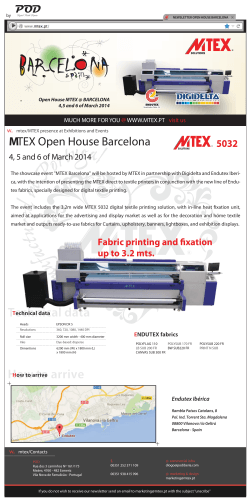
Gustau Catalan
Cracking Flexoelectricity Gustau Catalan1, 2*, A. Abdollahi2,3, K. Cordero2, M. Arroyo3, I. Arias3 ICREA-Institucio Catalana de Recerca I Estudis Avançats, Barcelona, Spain 2 ICN2-Institut Catala de Nanociencia i Nanotecnologia (Severo Ochoa Excellence Centre), Campus UAB, Bellaterra 08193, Barcelona, Spain 3 LaCaN-Laboratori de Càlcul Numèric, Departament d’Enginyeria, Universitat Politècnica de Catalunya (UPC), Barcelona, spain 1 *e-mail: [email protected] The recent surge of research on flexoelectricity (polarization induced by strain gradients) has been fuelled by the realization that strain gradients scale in inverse proportion to size, leading to magnified flexoelectric effects at the nanoscale1,2,3. By contrast, piezoelectricity (polarization induced by strain) is a relatively size-independent property and, as a consequence, there exists a range of sizes where flexoelectricity and piezoelectricity are are of comparable magnitude and may cooperate or compete with each other. The interaction between piezoelectricity and flexoelectricity leads to new physical phenomena, not only in nanoscopic samples, but even in bulk single crystals provided that these have nanoscopic features. Here I will discuss some of the effects that emerge from the interplay between piezoelectricity and flexoelectricity, with emphasis on new phenomena and in particular the discovery of broken inversion symmetry in mechanical properties such as fracture toughness and crack propagation4. 1 Catalan et al, Flexoelectric rotation of polarization in ferroelectric thin films, Nature Materials 10, 963 (2011). 2 H. Lu et al, Mechanical Writing of Ferroelectric Polarization, Science 336, 59-61 (2012). 3 P. Zubko, G. Catalan, A. K. Tagantsev, Flexoelectric Effect in Solids, Annual Review of Materials Research 43, 387 (2013). 4 Abdollahi et al, Fracture Toughening and Toughness Asymmetry Induced by Flexoelectricity, Phys. Rev. Lett. (submitted). Curriculum Vitae Gustau Catalan graduated in Physics at the Universitat de Barcelona and got his PhD, also in Physics, at Queen's University of Belfast (2001). This was followed by research positions at the Mediterranean Institute for Advanced Studies, at the University of Groningen and at the University of Cambridge. Since 2009, he is an ICREA Research Professor and heads the Oxide Nanoelectronics group at the Institut Catala de Nanociencia I Nanotecnologia (ICN2) in Barcelona. Prof. Catalan's research explores the functional properties of oxide electroceramics at the nanoscale, with emphasis on strain coupling and phase transitions. Currently the two main themes of his research are the effects of strain gradients on electrical properties (flexoelectricity) and the physics and applications of domain walls (domain wall nanoelectronics).
© Copyright 2025





















